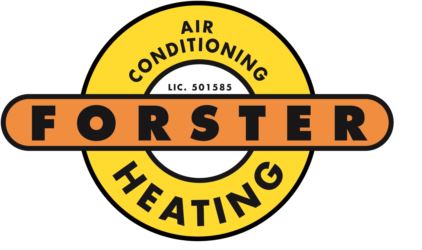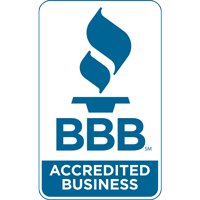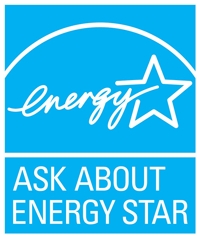
Ceiling fans are one of the most overlooked ways to increase home comfort and lower energy costs. By improving air circulation and working in conjunction with your HVAC system, ceiling fans and energy efficiency are truly a match made in heaven. They offer a cost-effective, cost-saving way to stay cool while reducing strain on your AC—potentially sparing you from unnecessary air conditioning repair.
In this blog, the experts at Forster Heating explain how ceiling fans can make your home feel more comfortable while increasing your HVAC efficiency. We'll also offer some HVAC efficiency tips that make the most of ceiling fans.
Comfort vs. Temperature: The Effect of the Wind-Chill Effect Indoors
Ceiling fans don’t actually lower the room temperature—they cool you down by moving air over your skin. This is known as the wind-chill effect, and it can make a room feel up to 4 degrees cooler without touching the thermostat. That means you stay comfortable and enjoy the benefits of indoor air circulation from your ceiling fan while using less AC—helping reduce your electric bill in summer.
The Best of Both: Benefits of Using Fans and Air Conditioning Together
There are several benefits to using ceiling fans and air conditioning together, especially when it's very hot outside. By using both, you maximize HVAC efficiency and enjoy a cooler living space with less work from your cooling system.
Benefits of using ceiling fans and AC together:
- Ceiling fans help lower HVAC load by spreading cool air more evenly throughout a room. Limiting HVAC stress is important, because it can save you from a breakdown that could result in premature AC or furnace installation.
- Using overhead fans boosts the comfort level of your home by eliminating hot spots and increasing airflow.
- Pairing ceiling fans and AC can lower your utility usage. If you have a home automation system, you can even fine-tune your smart thermostat settings to bump up the temp a few degrees while your ceiling fan is running.
Clockwise vs. Counterclockwise Ceiling Fan Rotation: What Direction to Spin in Summer and Winter?
To get the most out of your ceiling fans year-round, it’s important to ensure blades are rotating in the right direction for the season. The direction affects how air moves, which can either cool you down or push warm air downward so you feel warmer.
When to rotate ceiling fans counterclockwise
On hot days, ceiling fans should rotate counterclockwise at a quick speed. This creates a breeze that pushes cool air downward, enhancing the wind-chill effect and causing you to feel cooler.
When to rotate ceiling fans clockwise
On cold days, set your fan to turn clockwise on a gentle setting. This lifts cooler air and draws warm air downward from the ceiling, making the space feel cozier without touching your thermostat.
How to Pick Out the Best Ceiling Fan for My Home
Picking the right ceiling fan depends on a few critical considerations, such as blade design, airflow rating and room dimensions. First, look for fans with a good combination of ECFM airflow and blade pitch to provide efficient air movement in your home:
- ECFM refers to the amount of air a fan moves—the cubic feet per minute, or CFM—per watt of electricity consumed. Fans with greater ECFM are the most energy efficient.
- Blade pitch refers to the tilt of the blades. A sharper blade pitch moves more air but can also strain the motor.
Also, consider room size when sizing a ceiling fan—a fan that’s too small won’t move as much air as you'd like, while one that’s too large may be too strong for the space.
Increase Your HVAC Efficiency With Help from Forster Heating
At Forster Heating, our HVAC experts can help you stay comfortable while minimizing wear on your heating and cooling systems. From energy-saving ceiling fan tips and air conditioning installation to smart thermostats and furnace repair, we offer comprehensive solutions that work with your budget. Reserve your appointment by calling 530-903-5878 today.



